Artist: Christian Rothe
Place: Kunsthalle Erfurt Date: March 17 until May 7, 2023
Frame:
DISTANCE Alu 8 in Black matt
Behind the scenes: A look at exhibition designs with HALBE Rahmen
At the beginning, many questions revolve around the creation of an exhibition, and a lot of time and work is invested from the initial idea to the opening. Do you think in terms of the images or in terms of the space? And do the latter play any role at all? To find answers to these questions, we turned to photographer Christian Rothe. As a documentary and reportage photographer, he gave us insights into his working methods. His exhibition "Silent Witnesses. Photographs by Christian Rothe/ Sound Installation by Ludwig Berger" was presented from March 17 to May 7, 2023 at the Erfurt Kunstverein together with the Kunsthalle Erfurt. The photographs, taken on the grounds of the former Buchenwald concentration camp, are reminiscent of romantic landscape paintings and yet seem enigmatic. They show the ambivalence between the beautiful, untouched nature and the man-made cruelty that took place at this site.
Mr. Rothe, what steps do you go through from the initial concept to the finished exhibition?
In 2020, I showed a selection of works by the curator Susanne Knorr from the Kunsthalle Erfurt, whom I knew through my diploma thesis and a collaboration at the Galerie Waidspeicher. She was very convinced by the photographs of the Ettersberg to show them. Prof. Kai Uwe Schierz and the Erfurt Kunstverein also agreed to present the works in the Kunsthalle. I still knew the second curator, Andrea Karle, from my studies and was able to win her over for the project. With her support as well as the two institutions, we started the financing. The challenge for "Silent Witnesses" was to strike the right tone, as the subject requires special sensitivity. The works are photographed with analog large format, which creates great detail.
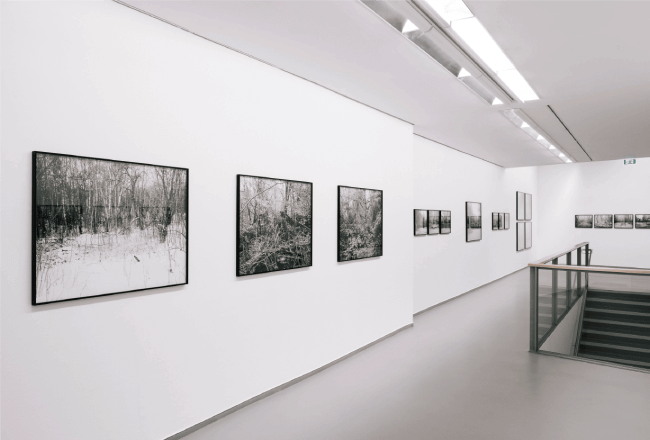
Thus, some works became very large, others smaller. With a simple, yet high quality in their form of presentation. In the end, it is the sequencing that creates tension and harmonizes well with the space. And above all hovers the budget.
The images were taken over a period of several years. Was the project started with the central idea or title "Silent Witnesses", or was the selection of the images made afterwards from the archive that was created?
The work was created between 2017 and 2022, but I don't consider it finished yet. The presentation at Kunsthalle Erfurt was an important step in making the work accessible and open to discussion. At the beginning, I didn't know where it would lead.
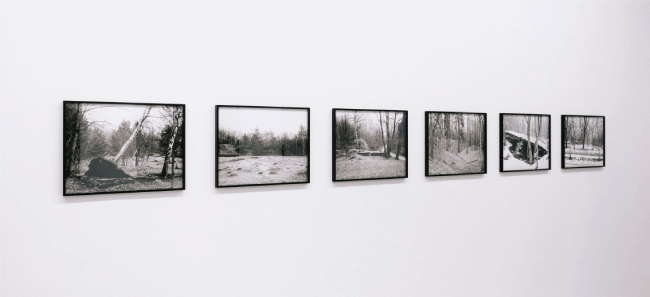
But after about a year, it was clear that it would become a larger work to be presented on a wall in an appropriate shape and size. Finding the title took a while, however, and I was unsure for a long time whether "Silent Witnesses" would work as a title. Finding a title is often difficult, but there are also situations where the title is clear and accompanies the work from the beginning. That was not the case here.
What significance do the subsequent venues have in such a process?
A work should stand on its own and be able to choose the appropriate form of presentation. I know the rooms in the Kunsthalle Erfurt and the Erfurt Kunstverein well and have seen many exhibitions there. Because with sensitive topics like this, it's not about the presentation of art, but about the presentation of a testimony of time.
How important are the image selection and sizes for the success of an exhibition?
The exhibition budget has contributed to the reduction and sharpened the planning. There are images that should be presented large and those that work well in smaller formats. The different formats not only add weight and contrast, but allow additional images to be presented without increasing production costs. In addition to the frames, exhibition prints and laminating must be considered, which adds additional costs.
How did the ideas and concepts for "Silent Witnesses" finally reach the wall?
There are different forms of presentation and hanging, which require a certain rigor. The wall developments were created in the layout program and corrected with the curators. Exhibition preparations began about a year before the opening with concept creation and applications. The final scans for the exhibition were made in January and printed in February. I coordinated the frame order with HALBE, taking into account insertion depths due to the lamination of the images on Alu-Dibond. I had the pictures laminated at ScanColor in Leipzig, then framed and delivered. The hanging of the works was done by the team of the Kunsthalle Erfurt.
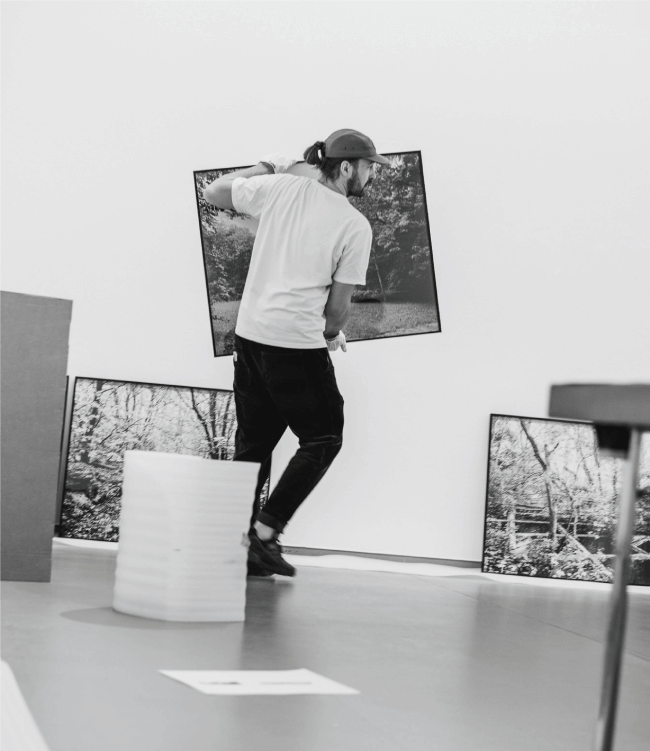
Is the Alu 8 Distance deliberately chosen?
I chose this type of black frame because of its versatility. First, as a spacer frame to create a gap between the glass and the picture to create a visual effect of "depth". Alternatively, you can place the glass directly on the picture, insert the spacer bars and use the profile bar as a finishing touch. This variant allows other effects in the presentation. The aluminum frames are also suitable for large sizes and still maintain a slim profile. It was important to me that the frames fit perfectly with the pictures on display: restrained, unobtrusive and simple, not competing with the pictures.
Was the planned wall layout spread out again in the room and checked or did it go directly, according to the layouts, on the wall?
After the works were delivered, we, the curators and I, distributed the works in the rooms according to the wall layout and leaned them against the walls to see whether what we had conceived digitally would also work analogously in the room. Since we worked on a scale of 1:10 when doing the layout, the preparation was worth a lot and was correspondingly precise. We then only shortened or lengthened individual rows a bit and made final adjustments to the distances between the images.
What aspects led to changes between the planning and hanging of the exhibition, what thoughts led to correction loops during the exhibition planning?
An important experience that I have now made repeatedly is that less is often more.
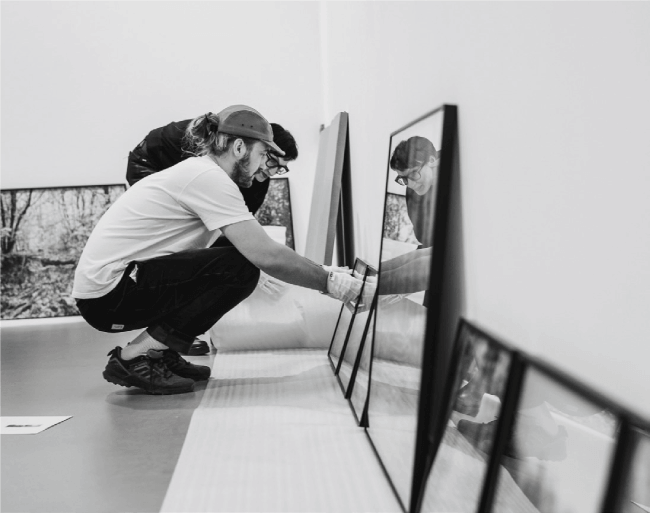
I would have liked to show more and hang more pictures, but it would not have made the presentation more rounded, not more coherent. But the whole thing also had budgetary constraints - it simply wouldn't have been possible, space aside, to produce 15 or 20 more works. But the beauty of this form of presentation is that you can expand it at any time and produce five or ten more works when the exhibition moves on and possibly has more space at another location.
How much support do you need for an exhibition like this?
It is a relief to have institutional support in the realization of an exhibition. In particular, hanging the works is made easier if you are experienced at it or have someone to do it for you. As a photographer and exhibition organizer, one appreciates the possibility of being able to hand over tasks.
An anecdote to finish off?
My girlfriend is a teacher and consequently has had little contact with the planning and conception of exhibitions. For me, it was also the first large and institutional presentation. When the planning for the exhibition started and the question of framing came up, she asked me whether frames could be borrowed. It was unfamiliar to her to have extra frames made each time for an exhibition, only to no longer need them after a few weeks or months and to put them back into storage.
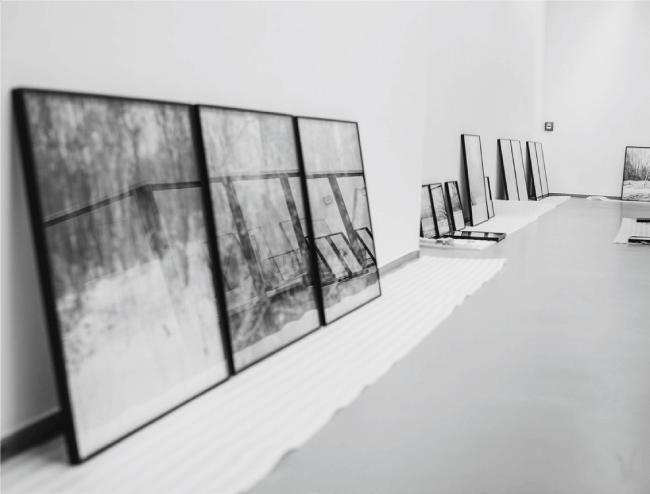
With the choice of the HALBE frames, however, it succeeds very well in this balancing act or compromise, if one can speak of a compromise here at all.